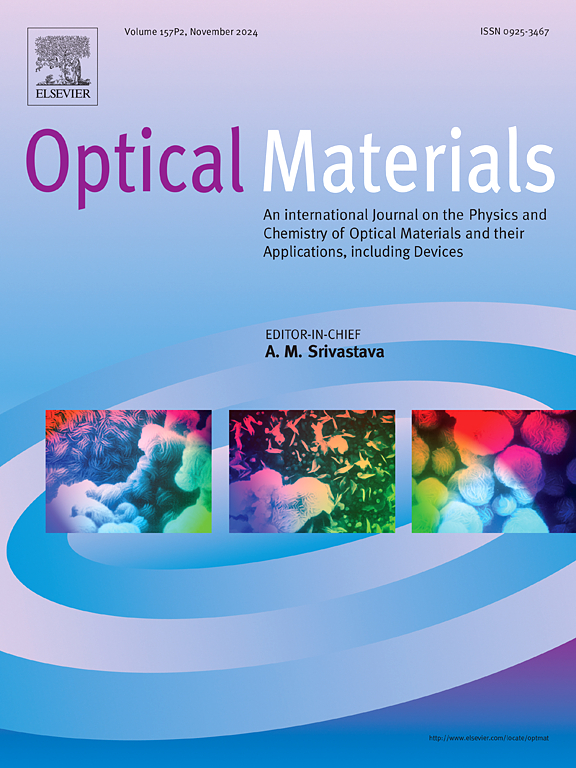Self-powered NiO/κ-Ga2O3 heterojunction photodiode for fast broadband ultraviolet (UV) radiation detection
IF 3.8
3区 材料科学
Q2 MATERIALS SCIENCE, MULTIDISCIPLINARY
引用次数: 0
Abstract
A novel broadband p-n UV photodiode is presented, that integrates an ultrawide band gap n-type κ-Ga2O3 epitaxial film doped with silicon (Si) and a p-type NiO polycrystalline film, to provide a planar NiO/κ-Ga2O3 p-n heterojunction for UV detection applications. The proposed device features a circular design, with a diameter of 240 μm, resulting in compactness and functionality, and represents the first demonstration of broadband UV detection using planar NiO/κ-Ga2O3 photodiodes. It can be operated in self-powered mode, which allows UV detection without use of an external power supply. The p-n photodiode exhibits excellent sensitivity to UVC light and acceptable sensitivity to UVB and UVA radiations. However, the response to UVA light is still weak and requires further optimization of the diode design. Response and recovery time below 0.8 s were observed for all UV illumination range. The presented photodiode has a simple design and shows significant potential in high-performance broadband UV detection in self-powered operation.

自供电NiO/κ-Ga2O3异质结光电二极管用于快速宽带紫外(UV)辐射检测
提出了一种新型的宽带p-n紫外光电二极管,该二极管集成了一个超宽带隙掺硅的n型κ-Ga2O3外延膜和一个p型NiO多晶膜,为紫外探测应用提供了一个平面NiO/κ-Ga2O3 p-n异质结。该器件采用圆形设计,直径为240 μm,具有紧凑性和功能性,是第一个使用平面NiO/κ-Ga2O3光电二极管进行宽带紫外检测的演示。它可以在自供电模式下运行,无需使用外部电源即可进行紫外线检测。p-n光电二极管对UVC光具有优异的灵敏度,对UVB和UVA辐射具有可接受的灵敏度。然而,对UVA光的响应仍然很弱,需要进一步优化二极管设计。在所有紫外照射范围内,反应时间和恢复时间均小于0.8 s。该光电二极管设计简单,在自供电的高性能宽带紫外检测中显示出巨大的潜力。
本文章由计算机程序翻译,如有差异,请以英文原文为准。
求助全文
约1分钟内获得全文
求助全文
来源期刊

Optical Materials
工程技术-材料科学:综合
CiteScore
6.60
自引率
12.80%
发文量
1265
审稿时长
38 days
期刊介绍:
Optical Materials has an open access mirror journal Optical Materials: X, sharing the same aims and scope, editorial team, submission system and rigorous peer review.
The purpose of Optical Materials is to provide a means of communication and technology transfer between researchers who are interested in materials for potential device applications. The journal publishes original papers and review articles on the design, synthesis, characterisation and applications of optical materials.
OPTICAL MATERIALS focuses on:
• Optical Properties of Material Systems;
• The Materials Aspects of Optical Phenomena;
• The Materials Aspects of Devices and Applications.
Authors can submit separate research elements describing their data to Data in Brief and methods to Methods X.
 求助内容:
求助内容: 应助结果提醒方式:
应助结果提醒方式:


